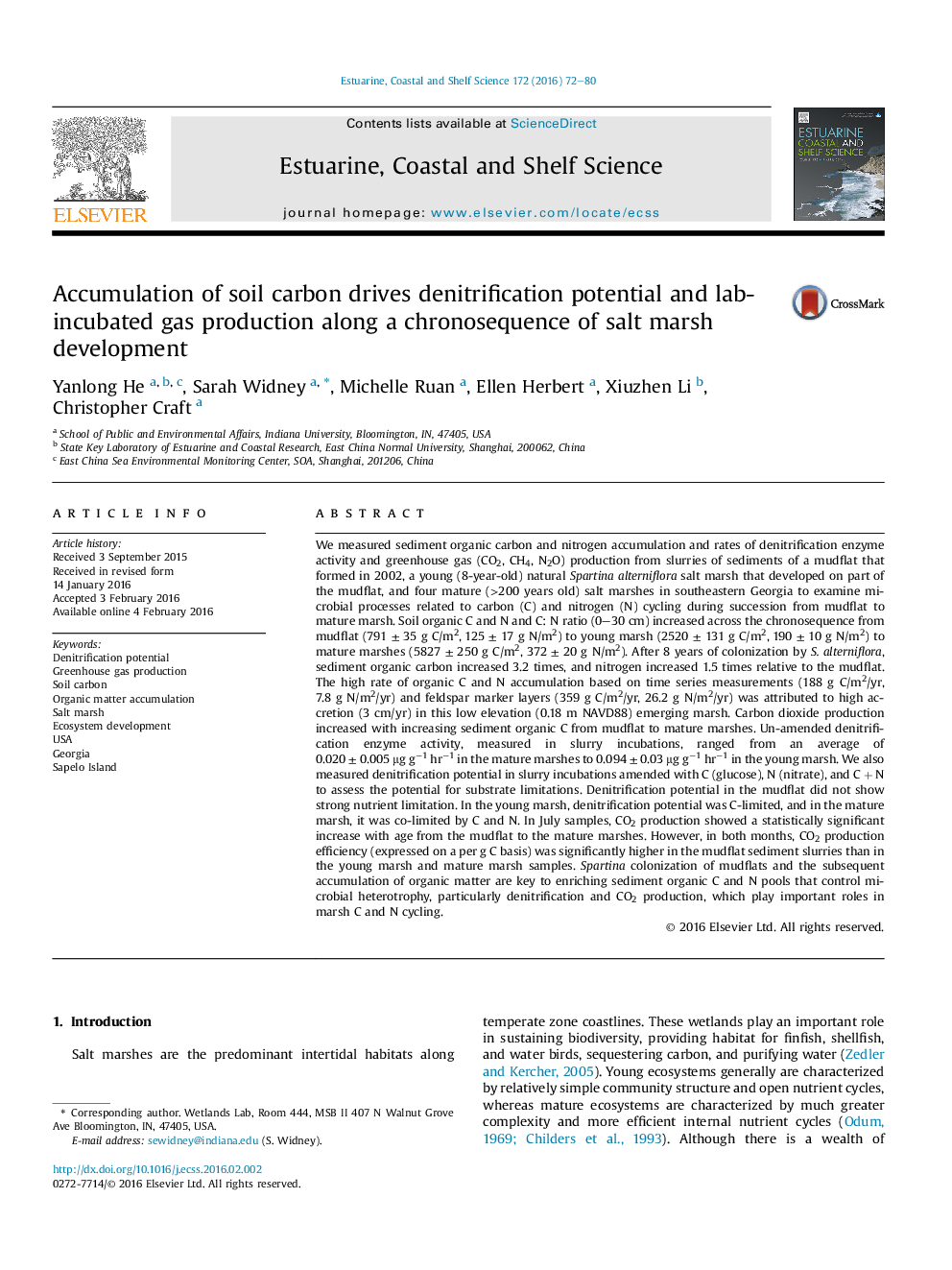| کد مقاله | کد نشریه | سال انتشار | مقاله انگلیسی | نسخه تمام متن |
|---|---|---|---|---|
| 4539310 | 1626627 | 2016 | 9 صفحه PDF | دانلود رایگان |
We measured sediment organic carbon and nitrogen accumulation and rates of denitrification enzyme activity and greenhouse gas (CO2, CH4, N2O) production from slurries of sediments of a mudflat that formed in 2002, a young (8-year-old) natural Spartina alterniflora salt marsh that developed on part of the mudflat, and four mature (>200 years old) salt marshes in southeastern Georgia to examine microbial processes related to carbon (C) and nitrogen (N) cycling during succession from mudflat to mature marsh. Soil organic C and N and C: N ratio (0–30 cm) increased across the chronosequence from mudflat (791 ± 35 g C/m2, 125 ± 17 g N/m2) to young marsh (2520 ± 131 g C/m2, 190 ± 10 g N/m2) to mature marshes (5827 ± 250 g C/m2, 372 ± 20 g N/m2). After 8 years of colonization by S. alterniflora, sediment organic carbon increased 3.2 times, and nitrogen increased 1.5 times relative to the mudflat. The high rate of organic C and N accumulation based on time series measurements (188 g C/m2/yr, 7.8 g N/m2/yr) and feldspar marker layers (359 g C/m2/yr, 26.2 g N/m2/yr) was attributed to high accretion (3 cm/yr) in this low elevation (0.18 m NAVD88) emerging marsh. Carbon dioxide production increased with increasing sediment organic C from mudflat to mature marshes. Un-amended denitrification enzyme activity, measured in slurry incubations, ranged from an average of 0.020 ± 0.005 μg g−1 hr−1 in the mature marshes to 0.094 ± 0.03 μg g−1 hr−1 in the young marsh. We also measured denitrification potential in slurry incubations amended with C (glucose), N (nitrate), and C + N to assess the potential for substrate limitations. Denitrification potential in the mudflat did not show strong nutrient limitation. In the young marsh, denitrification potential was C-limited, and in the mature marsh, it was co-limited by C and N. In July samples, CO2 production showed a statistically significant increase with age from the mudflat to the mature marshes. However, in both months, CO2 production efficiency (expressed on a per g C basis) was significantly higher in the mudflat sediment slurries than in the young marsh and mature marsh samples. Spartina colonization of mudflats and the subsequent accumulation of organic matter are key to enriching sediment organic C and N pools that control microbial heterotrophy, particularly denitrification and CO2 production, which play important roles in marsh C and N cycling.
Journal: Estuarine, Coastal and Shelf Science - Volume 172, 5 April 2016, Pages 72–80
